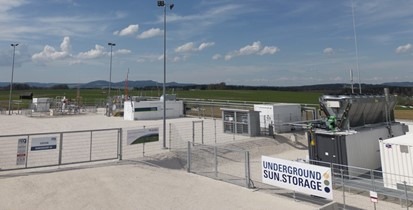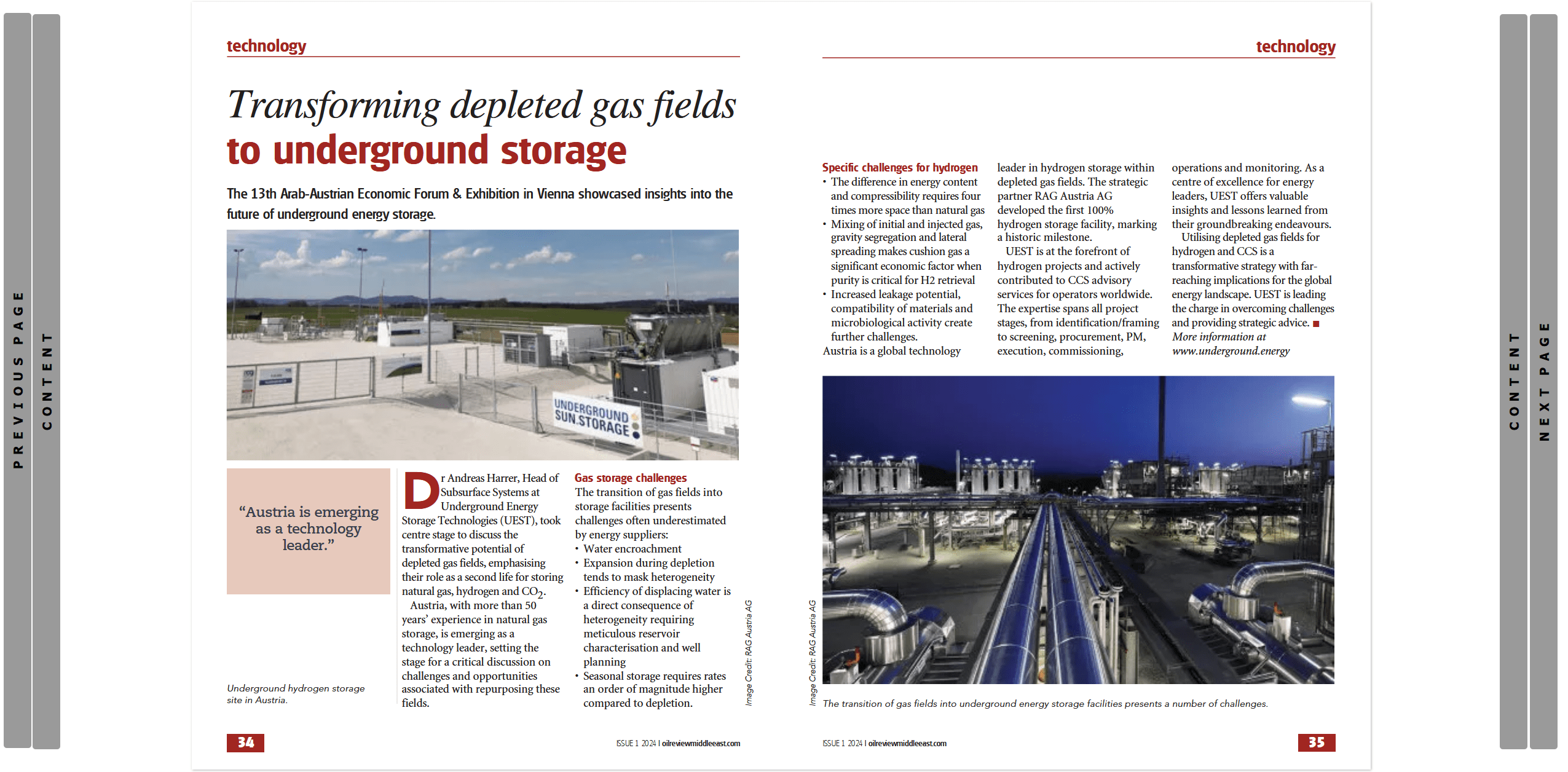
Austria, with over 50 years of experience in natural gas storage, is emerging as a technology leader in this field, setting the stage for a critical discussion on the challenges and opportunities associated with repurposing these fields.
Challenges in the Conversion of Gas Storage
The transition of depleted gas fields into storage facilities presents challenges often underestimated by energy suppliers.
Dr Harrer highlighted several key challenges in the transition to storage common to all types of gases natural, CO2 and hydrogen:
- Water encroached during depletion operations occupies pore space that needs to be made accessible again.
- Domination of expansion during depletion operations tends to mask existing heterogeneity.
- The achievable efficiency of displacing water by the injected gas (hence storage capacity) is a direct consequence of existing heterogeneity requiring meticulous reservoir characterisation and proper well planning.
- Seasonal storage operations require typically storage rates at least an order of magnitude higher compared to depletion phase.
Specific Challenges for Hydrogen Storage
- Considering the difference in energy content and compressibility requires four times more space for hydrogen than natural gas.
- Mixing of initial and injected gas, gravity segregation and lateral spreading makes cushion gas a significant economic factor when purity is critical for H2 retrieval.
- Increased leakage potential at seals and flanges and compatibility of materials as well as stimulation of microbiological activity create further significant challenges.

Austria’s Leadership in Hydrogen Storage
Austria has positioned itself as a global technology leader in hydrogen storage within depleted gas fields, surpassing the challenges.
The country’s commitment to innovation is evident in its pioneering projects, including injecting 100% hydrogen into a depleted gas field. The strategic partner RAG Austria AG developed the first hydrogen storage facility of its kind, marking a historic milestone this year.
Key Initiatives by UEST
Underground Energy Storage Technologies has been at the forefront of several hydrogen pilot projects and has actively contributed to CO2 CCS advisory services for operators worldwide. The combined expertise of UEST spans all project stages, from identification and framing to screening, procurement, project management, execution, commissioning, operations and monitoring. The organisation stands as a centre of excellence for energy leaders, offering valuable insights and lessons learned from their ground-breaking endeavours.
Utilising depleted gas fields for hydrogen storage and carbon capture is a transformative strategy with far-reaching implications for the global energy landscape. UEST, and its commitment to innovation, is leading the charge in overcoming the challenges associated with this transition and providing strategic advice to Energy Leaders. As the world looks toward sustainable energy solutions, the lessons learned from Austria’s experiences serve as a reference for future projects in the dynamic and evolving field of underground storage of hydrogen and CO2.
Oil Review Middle East
This article was featured in the Oil Review Middle East magazine:
About Underground Energy Storage Technologies (UEST)
As a centre of excellence, UEST is a strategic partnership of the HOT Energy Group, the ILF Consulting Engineers Austria, RED Drilling & Services, and CAC Engineering. The consortium fuses the individual partners’ decades of specialised know-how and expertise in underground storage technologies. UEST delivers high-end and cutting-edge solutions for natural gas (UGS), carbon dioxide (CCUS), and hydrogen storage – from prospect assessment and operational planning, drilling, workover, and well engineering, all the way through to handover of storage facilities.
Further information: www.underground.energy, www.hoteng.com, www.ilf.com, www.red-drilling-services.at, www.cac-chem.de
Interested?
Contact us today to discuss how your underground energy storage projects can benefit from UEST’s decades of expertise!
